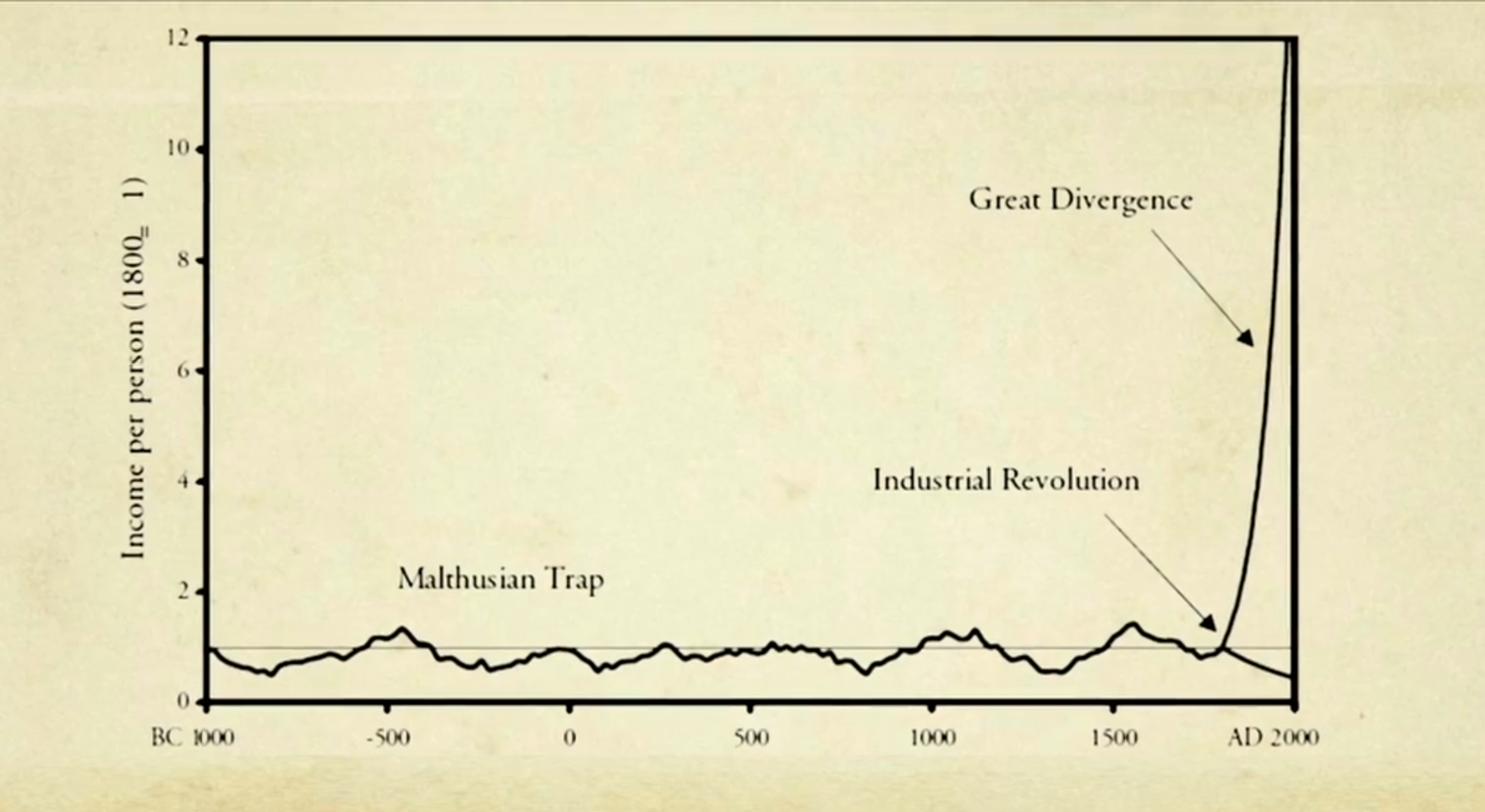Notes from Virginia's The Modern World, Part One- Global History from 1760 to 1910
Table of Contents
1. From the Traditional to the Modern - Commercial and Miliary Revolutions (1760-1800)
1.1 The Study of History
- What happened in the past?
- Why things happnened the way they did?
- Things that happened without human intervention, through circumstances beyond human control. i.e Volcanic Eruption?
- Things that happended through choices made by human beings ie. Political Upheavals
Things that didn't happen makes it interesting to study, things that did happen.
The circle of history - the story or narrative,
Situation → Problem → Solution → New Situation
1.2 The Great Divide
Traditional vs Modern World
Traditional World: where the basic circumstances of life don't change much from one generation to the next.
Modern World: where the conditions of life changing constantly.
One metric to follow is the population growth (and lifespan). Something happened due to which the whole rate of population growth dramatically changed in the late 1700s, a change that continues.
Check the interactive graph: Human Numbers Through Time
Another metric would be Real Income. The idea here is that if the population is increasing, there are still finite amount of resources produced, so therefore the food available to them drops, if the population grows up. The Malthusian Trap. Population rises, declines, the real income stays pretty constant for around 2000 years

At 1800, the Malthusian Trap was broken.
The Rise of Global Europe
The Political Revolutions: Liberal, democratic, "national". From the kings, emperors, warrior cheiftains, priests, traditional religion to the people. The revolutions. American, French, etc.
Cultural: the finite limits on human knowledge and imagination of the traditional world are breaking the development of science and technology. The sense of human mastery over environment. Human ability to create new sources of energy. Beliefs about limits/possibilities, other humans, identity, status, prosperity, power, security were going enormous changes..
1.3 The Traditional and the Modern
Traditonal and Modern:
Things moved based on natural energy. Animal power, wind, water, maybe assisted by crude pulleys → Manmade energy. Tapping sources of energy embedded in fossil fuels, even atom itself.
rural, agricultural, for most of human history at no point more than 10-15% population even live in towns. Overwhelmingly rural. → urban, industrial. Population living more and more in cities, to a degree unprecedented in human history.
static, subsistence → growth, surplus. a world where incoming growth happens, People have more and more surplus resources. Money to save, invest.
unstable lives, stable communities: human lives were unstable. Plauge, famine,war were common, but their communities have a stable rhythm to them. Son, Father, Grandfather all have a similar life. → longer, more secure lives, unstable communities. Constant change and churn in the ways of society.
faith → science. the sense of human mastery over environment instead of human submission to the environment
local identity/culture. people lived and died in a radius of 30-50 miles. It was difficult to travel significant distances, to get news of what's happening in the outside world. therefore, the sense of community was intensely local. → mass identity/culture. look at the goddamn internet.
